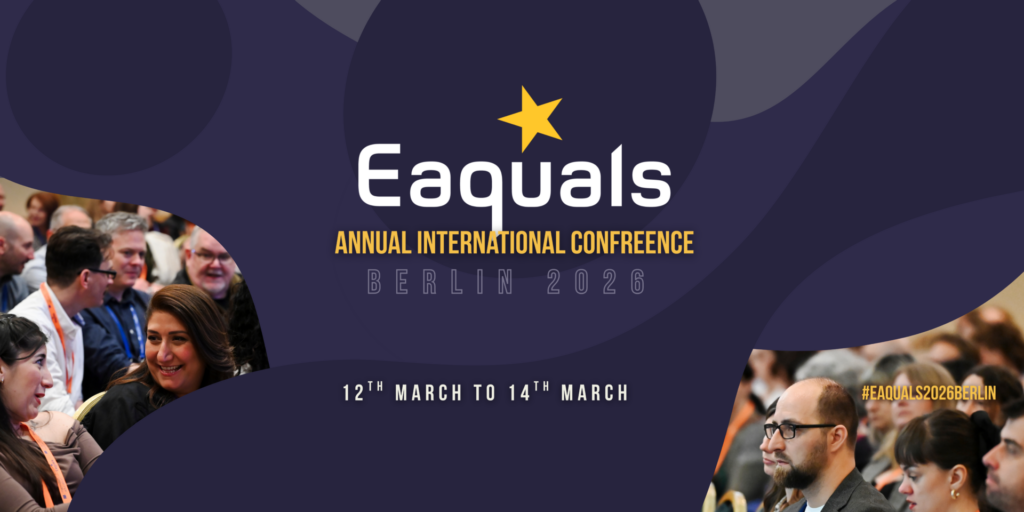Event Programme
Key: Sesson Types
21st Friday Programme
On average, managers spend 25% of their work time dealing with various types of conflict– both their own, and within their teams. This means that in an average 5-day week a manager will spend more than one whole day just dealing with conflict or its fallout.
In our industry, the pandemic has only speeded up the move towards telecommuting, as well as the development of online teaching and training. These are here to stay, as the benefits for organisations regardless of size, and their internal and external clients are obvious. However, remote work settings tend to produce more disagreements than traditional, face-to-face ones. In this practical talk we will look at conflict triggers in remote teams, and explore the most effective actions which can help prevent or manage conflict successfully.
Break
The presentation will examine how language schools can create more inclusive learning environments which consider gender equality while designing and delivering the courses they offer. The presentation will start by highlighting why gender equality should be an important agenda item for language schools all around world. After this introduction, the speaker will explain how gender equality can be considered while designing a curriculum and in all phases of teaching and learning activities in school. This will include how to consider gender equality while selecting a course book, preparing course materials, and how to train teachers to deliver their courses considering gender equality. The presentation will also include voices of the students who share their ideas on gender inclusive practices in language classrooms.
I will explore how PowerPoint can be used to convert any printed material into digitized material that can be utilised for both online and face-to-face learning. Books, in other words printed material, have been in assistance of teachers and learners for a long time. They might even continue to do so. However, the recent pandemic has shown the importance of digital materials due to online lessons. I will show a practical solution as to how to digitize course books into PowerPoint files, which then can be both useful for distant and in-class learning. This is something we, as a task group in my institution, have been doing for the last semester for our own course book, which is used for exit levels.
This session will explore the newly-shaped diversity of our modern ELT classrooms and will examine how inclusive practices have changed over the last decade, especially with regards to students with special educational needs and refugee learners. Together we will discuss the current challenges and will delve into practical tips to inclusively structure our classrooms, support our learners and hear their voices.
Automated scoring and evaluation offers some advantages over humans as it allows for scoring and evaluating the responses efficiently and reliably. The aim of this session is to present the validity of automated scoring in assessing speaking and writing tasks of the TOEFL iBT® test as well as in selected preparation tools. The session will offer some background information about research and development of automated scoring systems at Educational Testing Service (ETS). It will also demonstrate the application of e-rater® automated scoring and feedback engine used for assessing writing and SpeechRater® service for assessing speaking. It will explain the design of the two to ensure the scoring quality. While automated scoring models have advantages, the limitations of automated scoring and assessment will also be discussed. This session will also highlight a hybrid approach in scoring constructed responses by combining human raters and automated scoring tools to maintain the validity, reliability, and fairness of the test scores.
Continuous professional development (CPD) for teachers in language teaching has received a lot of attention for some time now, and with the pandemic, the link between one’s well-being and professional development has become much more obvious. In fact, CPD is very much intertwined with a person’s well-being and the environment one works in. This session aims at presenting different professional development activities and tools that can be implemented in the workplace as well as stressing the importance of well-being and offering some ways of improving one’s physical and psychological condition. To this end, the presenter will share her personal experiences and practices conducted in her workplace. The session will be divided into the following parts: the importance of CPD, tools and activities for professional development and teacher’s well-being, the speaker’s personal experience in this regard and the approach at her workplace. There will also be time for questions and discussion at the end. This presentation might increase the participants’ awareness of how significant it is to continuously develop oneself and what can be done in this matter considering personal well-being. It will provide guidance for creating developmental opportunities for individuals and teams and hopefully instill new ideas in participants.
Surveying through the existing literature on well-being in education, one realizes that the majority of the research conducted is focused on the learners, and that teachers, in comparison, seem to have been marginalized in the discourse. The interconnectivity between teachers’ and students’ well-being is an undeniable fact; essentially one affects the other. Inspecting teachers’ well-being through the neuroscientific lens, it is argued by psychologists like Dr. Kate Brierton, that a triad of emotional systems: Drive, Soothing, and Threat is responsible for staying motivated, calm, and anxious respectively. Therefore, Brierton argues in favor of teachers’ well-being, which coupled with that of the students’ guarantees the maintenance of balance in educational environments. It is worthwhile to note how most of us love the dopamine and oxytocin associated with the Drive and Soothing systems while we try to avoid the adrenaline and cortisol generated by the Threat system. Therefore, this study argues that the cornerstone of building a ‘better-being’ for teachers is the welcoming and acceptance of emotions, which yields relief. From this, it follows therefore that resistance against the teachers’ affective turn could be the progenitor of negative consequences in educational domains.
Keywords: Teachers’ well-being, Neuroscience, Emotional systems, Relief
Lunch
Testing the home languages of learners provides invaluable information to instructors as well as validating the identity of these learners. Understanding what a learner knows in their home language can be invaluable in teaching them a second language. Moreover, when the test is connected to a certification, the learner can leverage their language skills in their careers or to meet certain educational requirements. This talk will present examples of programs that have utilized assessment to promote equity, diversion, and inclusion. Using tests approved by the Global Seal of Biliteracy, heritage communities in over 24 languages have found ways to validate their identities and promote the continued learning of these languages among their youth.
Resistance to online synchronous and asynchronous learning has been an issue for those forced into sudden change. However, online, blended and hybrid learning (both synchronous and asynchronous) is here to stay. As an inspector and as a teacher trainer, I have had the opportunity to observe many classes and I will be sharing my reflections.
The session will develop ways that online platforms and tools can be used to humanise online teaching i.e. how to make it learner-led, putting the learner at the heart of the process. I will consider and review good teaching techniques in an online context, how to set up tasks and activities to engage and motivate learners, and how to involve learners in a continuous humanistic assessment process to improve their performance.
I hope to show that teaching and learning online can be carried out in a relaxed, enjoyable atmosphere whilst still ensuring quality language teaching and supporting learners in achieving results.
You will come away with some practical ideas on how to assess wellbeing and happiness in yourself and in your institution. To do this we will consider what we and science understand by these terms with the help of Maslow and others and evaluate some examples of what might be considered “wellbeing initiatives” and how they play out in the context of language teaching organisations.
Online testing using remote proctors is not new. However, it is more prevalent now than ever and presents a number of benefits to learners, including flexibility, availability. and access. Online proctored tests also allow learning providers to deliver assessments in a more stream-lined manner. Online proctored tests also deliver excellent learner experience, making learning more flexible, accessible and inclusive.
This presentation will explore how online testing and the use of online proctoring can provide a secure, confidential and bespoke environment for learners who need and are looking at testing their language skills/levels as part of their learning journey. It will also explore the advantages of remote proctored delivery for learning providers allowing them to improve the services they provide to their students. The presentation will explore how remote assessment can meet the varied needs of both learners and institutions as well as some of the challenges that come with online delivery methods. The aim of the presentation is to provide information which will help participants consider their own provision and inspire them to investigate how innovations in technology can be utilised for the benefit of learners.
Paradigms shifts in education have brought the necessity of including wellbeing in our daily practices. Research in wellbeing is commonly attributed to the modern discourse of positive psychology (Seligman and Csikszentmihalyi, 2000). As teachers and learners spend most of their lives at school, educational goals should include both the academic and introspective, supporting them to live fulfilled lives. This presentation will start by giving a clearer understanding of the concept with a stress on distinguishing between hedonic and eudaimonic wellbeing and their effects on learner achievement (Ryan and Deci, 2001). It will then continue by pointing out the positive long-term effects of the latter shown through meaningful links between learners’ eudaimonic wellbeing and their academic achievement. Next, the results of a small study conducted at a SFL on instructors’ wellbeing and their impact on their teaching will be shared with the audience. Equality and inclusivity issues will be tackled, such as, family relationships, technological access, physical space to study and engage with services. Furthermore, four hands-on tasks will be shared with the audience: ‘What we share’, ‘Something to show you’, ‘Photomontage’, ‘Your perspective’. The presentation will end by suggesting further steps that could improve the wellbeing of teachers and learners.
This session will look at the value of having a clear organisation structure, lines of communication, and job role definition in overall workplace satisfaction.
It starts from the premise that a disorganised workplace with poor lines of communication causes undue stress and anxiety for employees. This disorganisation can help to create a company culture and mindset which is not always the most positive for employees, and this can be top the detriment of the business in general.
We will look at types of organisational structure which may suit different institutions and how best to instil professional behaviours around respecting job roles and remits. In addition, we will look at how company culture can have an effect on employee wellbeing and how best to change certain practices to try to introduce a culture more conducive to this wellbeing.
This session will encourage you to reflect upon the fact that employee wellbeing is not about once off events but actually about how the institution is structured to treat employees and their roles on a day to day basis and how you as an organisation can best set up for long term health.
22nd Saturday Programme
Opening & Welcome
It is daunting when faced with a class of 20 students, 10 of which have different educational needs. Where do you even begin? This session will look at the reasoning behind differentiating materials and identify tried and tested strategies and techniques that will support the teacher as much as they support the students. These ideas should help lead to the development of an inclusive classroom where the focus is on facilitating learning for all.
Break
Reflection is an essential component of professional development. Within the ECML’s framework of teacher competences, reflection is not only related to Competences for Professional Development (Dimension 7) but also to Didactic and Pedagogical Competences (Dimension 5) and Commitment to Values and Principles (Dimension 1). The aim of this workshop is twofold. First, it aims to present a reflective tool developed by the speakers as a part of a sequence of training activities. Second, it aims to encourage participants to reflect on pluralistic approaches and strategies in relation to a specific context as well as their own. As a result, teachers will be able to identify the need for pre-planning of possible changes for intervention towards pluralistic approaches.
We are living in a time with unprecedented opportunities for integrating technology into the teaching-learning process, making online interactions an important part of language classes whether fully online, hybrid or in a physical classroom. There is no doubt that existing and emerging technologies will continue to have a massive impact on the way we learn, the way we live and the way we work. Consequently, there is a growing need to consider how best to prepare for a technology-enhanced teaching future that maximises opportunities for learning.
In this workshop, we will explore practical activities that enhance learner engagement and make online interactions more meaningful, while also evaluating how we are currently implementing technology in our own teaching contexts. Together we will analyse examples of technology integration to see how they improve confidence, skills, and learning outcomes, and opportunities both to learn with others and to teach others enhancing the human interaction that is at the core of language learning.
We will also make reference to Trinity’s Teach English Online course and Certificate in Online Teaching (CertOT), that provides teachers with the knowledge and skills they need to make their online teaching as productive and enjoyable as their face-to-face teaching.
‘You can’t stop the waves but you can learn to surf’ Jon Kabat- Zinn
Research shows that regular mindfulness practice can help our emotional wellbeing, improve concentration, help positive sleep habits, enhance our ability to manage emotions and provide strategies for staying calm in stressful or worrying situations. In an educational context it can help teachers and school staff in the workplace, understand their own emotions, listen to and communicate with each other and students of all ages effectively and manage their stress levels and create a positive atmosphere. At exam time, it can be a powerful tool that can empower teachers, school staff and students to deal with exam-related stress and anxiety, helping them learn how to see the exam as a less threatening experience and how to engage their attention so they are more aware of what is happening around them, to ensure they learn better and develop mindful habits helping in daily life too.
During this practical session we will see what is mindfulness and practical ways for integrating mindfulness attitudes and growth mindset and using mindfulness practice with students to prepare them to deal more effectively with exam time and in the workplace better beyond school!
Online teaching and learning technology became an integral part of teaching during the Covid19 lockdown. However, as these radical changes were introduced practically overnight, teachers and students were often not able to explore the full potential of asynchronous learning which can accommodate the need for developing extensive reading skills, and exposure to English language and culture. Taking into consideration that the majority of learners are familiar with the use of technology, a literature course was designed to cater for the above-mentioned needs, using cloud-based learning tools. The workshop aims at highlighting the benefits primary school pupils can reap from a combination of synchronous and asynchronous learning practices despite their young age. It consists of three parts:
Part A
A brief introduction on the rationale behind the course design, anticipated difficulties and factors that were taken into consideration.
Part B
Practical activities and tools used during the literature course. The audience will be asked to be actively involved. Samples from student work will be displayed and lessons learned during the piloting of the literature course will be shared.
Part C
The floor will be given to the audience to ask questions and exchange of experience.
Our organisation has evolved over the years and our teaching teams have become more and more diverse. Issues around the ongoing use of the term “native speaker teachers” have sometimes led to uncomfortable situations.
At the British Council, we value diversity, and this talk will cover some of the actions we have been taking to deal with these challenges and promote the diversity and excellence of our teams.
Teaching is a profession that requires having a variety of roles, abilities, and the capacity to use various instruction aids but, it also requires being in an emotional, social, and psychological state of well-being to be able to build relationships with learners to engage them in learning.
This collaborative presentation focuses on exploring the factors that contribute to student engagement and the role of teacher motivation in promoting a positive learning environment.
Lunch
Panel: Voices & Insights (Teachers) - Issues from the face-to-face and online classroom: Wellbeing, EDI & future of online learning.











































